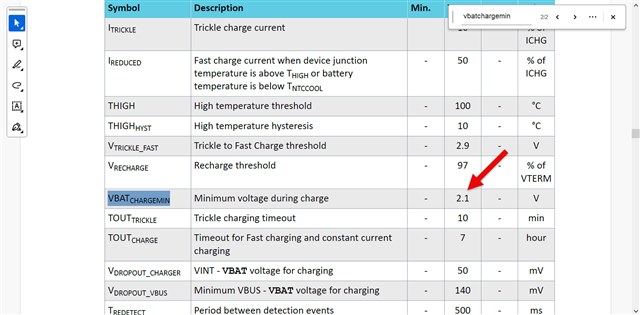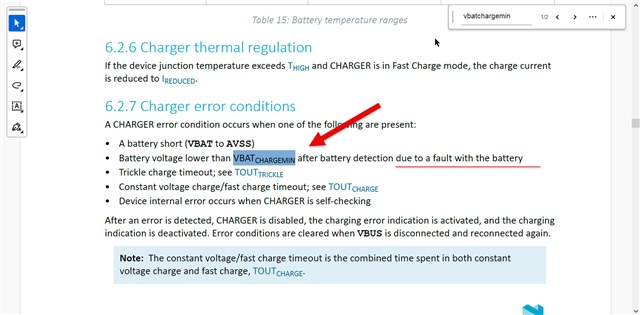Hi All.
I am testing a 4.2v Li-Ion battery charger mock-up with a Wireless Power Transfer having an nPM1100-EK at the end of the Secondary Stage and using its VOUTB 3v buck output to charge the application circuit. Everything works as expected except for one detail.
If I don't use the device for a long time, let's say one month, and even with no load in the VOUTB output, VBAT goes too low, and when I switch back the system, your nPM1100-EK turns on the red LED, apparently preventing the recharge.
The only way to come around the problem I've found was to remove the battery from the mock-up and charge it directly with an external CC/CV wired power supply till I reach VBAT above 3 volts. Then, if I place the battery back on the wireless charging device, the green LED goes on, seamlessly completing the charging cycle as many times as I need.
The bad news is that the final product will have the battery permanently sealed, so you can't physically reach it, and even if you could, the outcome would not be commercially viable.
Any suggestion?
Thanks




